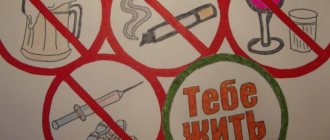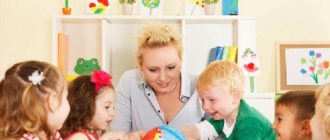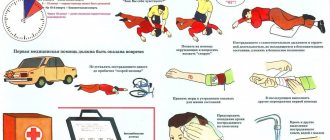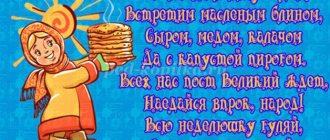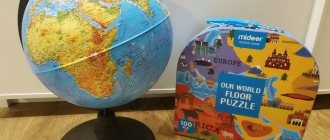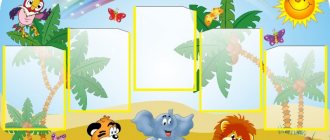The role of corners in children's development
Let's start with the fact that the design of corners in kindergarten is of great importance, especially for children. The child spends most of his time here. And everything fundamental in character, behavior and habits is laid down from a very early age. That is why preschool childhood is an important period in the life of every child. At this stage, he gains experience in social relations, gets to know society, learns to communicate with people, becomes familiar with acceptable forms of behavior and learns to follow them.
For proper and harmonious development, it is important for a child to communicate with peers. This is one of the main reasons why children are sent to kindergarten. Factors such as parents’ employment, the need for adaptation and training, and much more also play an important role.
Children spend a lot of time in kindergarten and their activities there are very diverse: from outdoor games to quiet activities with a teacher. That is why properly organized play areas in kindergarten are of great importance for the development of preschoolers.
The atmosphere in the kindergarten should be such that the child wants to come there. This is especially true for the younger group, because the children have just begun to get used to a new life and a new team, and for the first time they began to be separated from mom and dad for a long time. Everything should help ensure that the process of adaptation to kindergarten is painless. The design of the kindergarten is also of great importance.
The design of a group in kindergarten should not be bright and flashy. Let the light background prevail. Depicting an excessive number of cartoon and fairy-tale characters on the walls is not always justified, especially if these images are large in size. The kid should not be afraid of the huge turtle from the cartoon, which he still does not know at all. It needs to be something educational. For example, the theme of the seasons, because children in the younger group are still very young and are just beginning to learn what snow, rain, and leaves on trees are. The size of the images should not exceed the norm, because the age characteristics of children do not yet allow them to focus their gaze well enough to distinguish large objects.
The knowledge and skills acquired by a child in kindergarten are the basis for his successful education in primary school. Here, teachers unobtrusively, often in a playful way, help the child get acquainted with some school knowledge: numbers, letters, and attend nature and creativity lessons. Classes are held in the form of marathons, competitions, lessons, and holidays. It should also be noted that the child independently studies the information available to him. How can group corners designed by the teacher in kindergarten help?
When thinking about the design of a group in a kindergarten, it would be advisable to divide it into zones. The usual zoning of a group in a kindergarten is: bedroom, dining room, play area and activity area, but additional options can be provided.
There should, of course, be no distracting images where children sleep, as well as in the dining room. But we should talk about developmental zones in kindergarten in more detail.
An approximate model of a developing subject-spatial environment in all groups of preschool educational institutions
Kalmykova Anastasia Albertovna
Highest qualification category
Saratov
MDOU "Combined kindergarten No. 233"
Senior teacher
OOP preschool educational institution compiled taking into account the approximate program Ed. N. E. Veraksy, T. S. Komarova, M. A. Vasilyeva. - M.: MOSAIC-SYNTHESIS, 2012.
An approximate model of a developing subject-spatial environment
in all groups of preschool educational institutions
Development type "Other"
Explanatory note
The developing subject-spatial environment in a children's educational institution serves the development of children's activity and, above all, play activity. A powerful cognitive motive is born within the game, which is the basis of educational activities. Through a developing subject-spatial environment, we form the zone of proximal development of children.
The developing subject-spatial environment ensures the maximum realization of the educational potential of the space of the preschool educational institution, group cell, as well as the territory adjacent to the preschool educational institution, materials, equipment and inventory for the development of children in accordance with the characteristics of each age stage, the protection and promotion of their health, taking into account characteristics and correction shortcomings in their development. A developing subject-spatial environment should provide the opportunity for communication and joint activities of children (including children of different ages) and adults, physical activity of children, as well as opportunities for solitude.1
The developing subject-spatial environment should provide:
implementation of various educational programs;
in the case of organizing inclusive education - the necessary conditions for it;
taking into account the national, cultural and climatic conditions in which educational activities are carried out;
taking into account the age characteristics of children.
When constructing and updating the developmental subject-spatial environment of the preschool educational institution, the following were observed:
- Saturation.
2) Transformability.
3) Multifunctionality
4) Variability
5) Availability of the environment
6) Security
Model of a developing subject-spatial environment for the 1st junior group
| Mini environment | Purpose | Name of development zone | accommodation |
| "Cognitive" - introduces the child to the world of familiar and unfamiliar objects, sounds, phenomena, actions and relationships. | For cognitive and speech development (integrated with aesthetic) | Book house | G |
| Pictures for fun | G | ||
| "Let's get acquainted" | R | ||
| Petrushkin Theater | G | ||
| Mummers Corner | G | ||
| Masha the Confused Storeroom | R | ||
| Congratulations | R | ||
| Green corner | G | ||
| Fish house | G | ||
| Shelf of toys | G | ||
| House for clothes | R | ||
| For gender development | Kuklin house | G | |
| "I am builder" | G | ||
| Kitchen | G | ||
| Clinic of Doctor Aibolit | G | ||
| Corner of solitude | G | ||
| Salon | G | ||
| For artistic and aesthetic development | Creativity table | G | |
| Music Development Zone | G | ||
| Our vernissage | R | ||
| "Wellness" — determines the development of motor activity of the child, promotes health improvement | For physical development | Washbasin | U |
| Miracle rugs | G | ||
| Twist hats | G | ||
| Miracle ride | G |
Symbols for the placement of objects: P – dressing room G – group room U – washroom
Model of a developing subject-spatial environment for the 2nd junior group
| Mini environment | Purpose | Name of development zone | accommodation |
| "Cognitive" — satisfies the child’s need to master the world around him, stimulates cognitive activity | For cognitive development (integrated with gender, speech, aesthetic development) | Book House | G |
| Farm | G | ||
| These funny animals | G | ||
| Green corner (nature corner) | G | ||
| House for fish | G | ||
| Mini market (shop) | G | ||
| Wall of Seasons | G | ||
| Mini laboratory | G | ||
| Music salon | G | ||
| Game library | G | ||
| Mini-museum “Dymkovo Toy” | G | ||
| "Social-communicative" - aimed at achieving the goals of mastering initial ideas of a social nature | For gender development | Dollhouse | G |
| Design | G | ||
| Kitchen | G | ||
| Clinic of Doctor Aibolit | G | ||
| Beauty saloon | G | ||
| car showroom | G | ||
| "Speech" – stimulates speech development, allows the child to learn the basics of communication and interaction | For speech development (integrated with aesthetic, cognitive) | Family living room | G |
| Corner of solitude | G | ||
| "Let's get acquainted" | R | ||
| Lost and Found Bureau "Lost" | R | ||
| Cozy sofa | G | ||
| Congratulations | R | ||
| "Wellness" — determines the development of motor activity of the child, promotes health improvement | For physical development | Sports corner | G |
| Miracle rugs | G | ||
| Twist hats | G | ||
| "Creative" – introduces children to creative activities, promotes self-development and self-realization | For artistic and aesthetic development | We create | G |
| Theater "Visiting a Fairy Tale" | G | ||
| Our vernissage | R |
Symbols for the placement of objects: P – dressing room G – group room U – washroom
Model of a developing subject-spatial environment for the middle group
| Mini environment | Purpose | Name of development zone | accommodation |
| "Cognitive" — satisfies the child’s need to master the world around him, stimulates cognitive activity | For cognitive development (integrated with gender, speech, aesthetic development) | Book House | G |
| Farm | G | ||
| These funny animals | G | ||
| Green corner (nature corner) | G | ||
| House for fish | G | ||
| Mini market (shop) | G | ||
| Wall of Seasons | G | ||
| Mini laboratory | G | ||
| Music salon | G | ||
| Game library | G | ||
| Mini-museum “Wood Crafts” | G | ||
| "Social-communicative" - aimed at achieving the goals of mastering initial ideas of a social nature | For gender development | Dollhouse | G |
| Design | G | ||
| Kitchen | G | ||
| Clinic of Doctor Aibolit | G | ||
| Beauty saloon | G | ||
| car showroom | G | ||
| "Speech" – stimulates speech development, allows the child to learn the basics of communication and interaction | For speech development (integrated with aesthetic, cognitive) | Family living room | G |
| Corner of solitude | G | ||
| "Let's get acquainted" | R | ||
| Lost and Found Bureau "Lost" | R | ||
| Cozy sofa | G | ||
| Congratulations | R | ||
| "Wellness" — determines the development of motor activity of the child, promotes health improvement | For physical development | Sports corner | G |
| Miracle rugs | G | ||
| Twist hats | G | ||
| "Creative" – introduces children to creative activities, promotes self-development and self-realization | For artistic and aesthetic development | We create | G |
| Theater "Visiting a Fairy Tale" | G | ||
| Our vernissage | R |
Symbols for the placement of objects: P – dressing room G – group room U – washroom
Model of a developing subject-spatial environment for the senior group
| Mini environment | Purpose | Name of development zone | accommodation |
| "Cognitive" — satisfies the child’s need to master the world around him, stimulates cognitive activity | For cognitive development (integrated with gender, speech, aesthetic development) | Book House | G |
| Shelf of smart books | G | ||
| These funny animals | G | ||
| Green corner (nature corner) | G | ||
| House for fish | G | ||
| Mini vegetable garden | G | ||
| Wall of Seasons | G | ||
| Mini laboratory | G | ||
| Music salon | G | ||
| Game library | G | ||
| Our collections | G | ||
| Traffic light areas | G | ||
| "Social-communicative" - aimed at achieving the goals of mastering initial ideas of a social nature | For gender development | Dollhouse | G |
| Design | G | ||
| Kitchen | G | ||
| G | |||
| Clinic | G | ||
| Mini market (shop) | G | ||
| Beauty saloon | G | ||
| car showroom | G | ||
| Fashion studio | G | ||
| For the formation of patriotic feelings, feelings of citizenship | Corner of Russia | G | |
| My Saratov | G | ||
| Mini-museum “Russian Izba” | G | ||
| Our Army | G | ||
| "Speech" – stimulates speech development, allows the child to learn the basics of communication and interaction | For speech development (integrated with aesthetic, cognitive) | Family living room | G |
| Corner of solitude | G | ||
| Congratulations | R | ||
| "Wellness" – introduces you to physical education, helps you learn ways to stay healthy | For physical development | Mini stadium | G |
| Health paths | G | ||
| Health corner (valeological) | G | ||
| "Creative" – introduces children to creative activities, promotes self-development and self-realization | For artistic and aesthetic development | We create | G |
| Theater "Visiting a Fairy Tale" | G | ||
| Our vernissage | R |
Symbols for the placement of objects: P – dressing room
G – group room
U – washroom
Model of a developing subject-spatial environment for a senior speech therapy group
| Mini environment | Purpose | Name of development zone | accommodation |
| "Cognitive" — satisfies the child’s need to master the world around him, stimulates cognitive activity | For cognitive development (integrated with gender, speech, aesthetic development) | Book House | G |
| Shelf of smart books | G | ||
| These funny animals | G | ||
| Green corner (nature corner) | G | ||
| House for fish | G | ||
| Mini vegetable garden | G | ||
| Wall of Seasons | G | ||
| Mini laboratory | G | ||
| Music salon | G | ||
| Game library | G | ||
| Our collections | G | ||
| Traffic light areas | G | ||
| "Social-communicative" - aimed at achieving the goals of mastering initial ideas of a social nature | For gender development | Dollhouse | G |
| Design | G | ||
| Kitchen | G | ||
| G | |||
| Clinic | G | ||
| Mini market (shop) | G | ||
| Beauty saloon | G | ||
| car showroom | G | ||
| Fashion studio | G | ||
| For the formation of patriotic feelings, feelings of citizenship | Corner of Russia | G | |
| My Saratov | G | ||
| Mini-museum “Golden Khokhloma” | G | ||
| Our Army | G | ||
| "Speech" – stimulates speech development, allows the child to learn the basics of communication and interaction | For speech development (integrated with aesthetic, cognitive) | Family living room | G |
| Corner of solitude | G | ||
| Congratulations | R | ||
| "Wellness" – introduces you to physical education, helps you learn ways to stay healthy | For physical development | Mini stadium | G |
| Health paths | G | ||
| Health corner (valeological) | G | ||
| "Creative" – introduces children to creative activities, promotes self-development and self-realization | For artistic and aesthetic development | We create | G |
| Theater "Visiting a Fairy Tale" | G | ||
| Our vernissage | R |
Symbols for the placement of objects: P – dressing room
G – group room
U – washroom
Model of the developing subject-spatial environment of a preparatory speech therapy group
| Mini environment | Purpose | Name of development zone | accommodation |
| "Cognitive" — satisfies the child’s need to master the world around him, stimulates cognitive activity | For cognitive development (integrated with gender, speech, aesthetic development) | Book House | G |
| Shelf of smart books | G | ||
| These funny animals | G | ||
| Green corner (nature corner) | G | ||
| House for fish | G | ||
| Mini vegetable garden | G | ||
| Wall of Seasons | G | ||
| Mini laboratory | G | ||
| Music salon | G | ||
| Game library | G | ||
| Our collections | G | ||
| Traffic light areas | G | ||
| "Social-communicative" - aimed at achieving the goals of mastering initial ideas of a social nature | For gender development | Dollhouse | G |
| Design | G | ||
| Kitchen | G | ||
| G | |||
| Clinic | G | ||
| Mini market (shop) | G | ||
| Beauty saloon | G | ||
| car showroom | G | ||
| Fashion studio | G | ||
| For the formation of patriotic feelings, feelings of citizenship | Corner of Russia | G | |
| My Saratov | G | ||
| Mini-museum “Folk Traditions” | G | ||
| Our Army | G | ||
| "Speech" – stimulates speech development, allows the child to learn the basics of communication and interaction | For speech development (integrated with aesthetic, cognitive) | Family living room | G |
| Corner of solitude | G | ||
| Congratulations | R | ||
| "Wellness" – introduces you to physical education, helps you learn ways to stay healthy | For physical development | Mini stadium | G |
| Health paths | G | ||
| Health corner (valeological) | G | ||
| "Creative" – introduces children to creative activities, promotes self-development and self-realization | For artistic and aesthetic development | We create | G |
| Theater "Visiting a Fairy Tale" | G | ||
| Our vernissage | R |
Symbols for the placement of objects: P – dressing room
G – group room
U – washroom
FEDERAL STATE EDUCATIONAL STANDARD OF PRESCHOOL EDUCATION, approved by order of the Ministry of Education and Science of the Russian Federation dated October 17, 2013 N 1155
Zoning in kindergarten
Perhaps, when planning play areas in a preschool educational institution according to the Federal State Educational Standard, one should, first of all, take into account the age of the children and their number. It is also worth finding out the opinion of parents: by asking what they want to see in the group, this will not only show your interest, attention and respect, but also, most likely, you will find proactive helpers.
For convenience, transfer all original ideas for designing a group in a kindergarten to a drawing plan, be sure to indicate on it the names of the corners and their locations.
Depending on the vastness of the space, zoning in a kindergarten group can be quite rich. Below are the most popular zones in the kindergarten group according to the Federal State Educational Standard. Select and organize those that will correspond to your current goals and objectives for the development and upbringing of children.
Zoning in the preparatory group of kindergarten
Outdoor games area
Physical education plays a vital role in the development of children, and it is also important to remember this when planning the design of a kindergarten. Of course, modern kindergartens have gyms and swimming pools, but it is still worthwhile to provide a mini-health corner in the group. This area should be spacious enough. Children should be able to run and jump. A gymnastic wall and various sports equipment would be appropriate here: hoops, balls, skittles, jump ropes. However, we must not forget that the equipment must be appropriate for the age of the children.
Role-playing games area
The design of play areas in a kindergarten provides wide scope for creativity for their organizer. There should, of course, be a lot of toys here. But among their number, children must be able to navigate. Therefore, it is necessary to make themed corners. Separately, you can organize a hairdresser with a chair, dolls and toy tools; hospital, where there will be white coats and medical supplies. You can also create a kitchen corner for girls in kindergarten. To organize it, a toy stove, dishes, food, an apron and a chef's hat, as well as dolls in aprons, are suitable.
Girls, with their favorite games of mother-daughter, tea party or shopping, will feel cozy in a special playhouse. Be sure to post it if possible.
There is also a place for boys in the playhouse; they will be the ones who will come to visit and learn the basics of etiquette. Their play area can be placed nearby and its design can be approached in an equally original way, for example, by making an impromptu garage, where there will be cars of different sizes and purposes: trucks, cars, dump trucks, buses, ambulances, police and fire departments. A railway could also be built here. You can also make a small repair shop corner with toy hammers, nuts, screws and other supplies.
Correctly designing areas in a kindergarten is an excellent opportunity for a teacher to unobtrusively show children the basics of adult life: what and how to cook with, how to properly receive guests, take care of younger children, and much more.
Study area in kindergarten
In the learning corner there must be a table at which several children can be seated at the same time. There they can draw, make crafts, learn to read, count and play relaxing board games.
The filling and design of the learning area in kindergarten should take into account the age of the children. Place here cubes, mosaics, various kinds of construction sets that do not contain small parts, educational and educational board games - here kids can practice, developing fine motor skills and expanding their knowledge about the world around them. Don't forget to allocate space for the simplest geometric shapes, shapes of different colors.
The safety corner can be placed separately or, if group space does not allow, it can be made part of the study area. Post here information about traffic rules, fire safety, and standards of behavior indoors and outdoors.
Social Development Zone
The previous zone can be separated by a bookcase or bookcases, combining with a social development corner and a book corner. It is advisable to locate this area away from the place of noisy games, because, being distracted, the child will not be able to concentrate on communicating with the book. The corner should be well lit and have a place where the baby can sit and leaf through a book.
Through a book, a child learns a whole range of human feelings, thoughts, and relationships between characters. By identifying himself with a hero, a child takes on a certain model of behavior, which he tries to follow throughout his life. It is necessary to provide a corner with various books appropriate to the age category of children. There should be fairy tales, instructive stories, books about nature, as well as educational books. The corner should be regularly replenished with new interesting and colorful specimens, thereby maintaining children’s interest in it.
In the social development zone there is a place not only for books, but also for a small family history of each child. Try inviting parents and children to choose photos for small family albums that they can proudly show to friends when talking about family, important events or travel.
Corner of nature
There is no doubt that designing a corner of nature in a kindergarten is an excellent basis for introducing a child to natural phenomena.
In the younger group, as a rule, the corner of nature is limited to indoor plants, but for children in the older group it will be much more interesting to study the calendar, the change of seasons, natural phenomena, parts of plants and trees.
The theme of the corner of nature deserves special attention. It is much more interesting when the exhibition changes, for example, once a quarter, then such a corner of the group will attract much more attention from the child. As winter approaches, it is useful to fill it with information on caring for birds at this time, for example, display photographs of wintering birds, perhaps build a feeder with children in labor lessons.
Creating a greenhouse is also of no small importance. Using the example of different types of plants, the child will understand that plants are different, that not all have a stem, but they all have roots, and the leaves can be of different shapes. You can add butterflies or dragonflies to your greenhouse, which children can make on their own. And if the pots with plants are labeled, it will be doubly educational. In the summer, a corner of nature can be supplemented with living garden or field plants or flowers, and in the fall with the fruits that nature gave.
The living inhabitants of the natural corner in the kindergarten will deserve special interest among the children. There could be a cage with a hamster or an aquarium with fish, and kids can be taught the basics of caring for animals. Before getting a pet, you must obtain the consent of all parents, be sure to ask adults if their children have allergies, and do not forget about a certificate from a veterinarian.
Preschool institutions, as a rule, do not effectively use the area in front of the kindergarten. Quite rarely, children are involved in landscaping the site, where corners such as vegetable gardens, flower beds, and corners of the garden have been created, which can be used to develop the basics of environmental consciousness in the child.
Music Development Zone
A music corner in kindergarten will help to reveal creative talents and increase the overall level of education. If it is not possible to place children's musical instruments there, limit yourself to pictures and a player.
Patriotic education zone
And in cultivating a love of work and patriotism, a local history corner will be a faithful assistant, in which there will be a place for objects of applied art and folk crafts that are popular in your area. Also, be sure to place symbols and portraits of the heads of state and your region here. This area will be especially decorated with dolls in national costumes, even if they are cut out of paper.
Creative Development Zone
The real decoration and pride of the kindergarten group is the children's creativity corner. The children’s works are not only aesthetic in nature, but also stimulate the child to achieve further success and serve as a clear example of the interaction between the teacher and the child.
Creative corners in the group, as a rule, are limited to an exhibition of children's works and crafts. But this is not the only function they can perform. For example, you can organize educational corners in preschool educational institutions dedicated to the work of various people, for example, famous artists or composers.
It is not necessary to use a small space for a creativity corner. For example, when preparing for the New Year, you can cut out and decorate the entire group with snowflakes: thus, you will get a “children’s creativity room.” And if you decorate the Christmas tree with homemade toys, you will get a “Christmas tree of children’s creativity.”
Children love to do things with their own hands; they always try and are happy with the result, if it also turns out to be satisfactory. And if there is an opportunity to decorate and display works in a different way, then you should not limit yourself to just a corner of creativity.
When forming zones in a preschool educational institution according to the Federal State Educational Standard, remember that the main requirement for the environment and design of a group in a kindergarten is safety. Avoid sharp corners, slippery floors, and ensure that wall shelves or decorative items are securely attached.
Approach space planning and design of activity areas in kindergarten creatively and with love, and you will definitely have a cozy group where both children and their parents will be happy to come every day!
